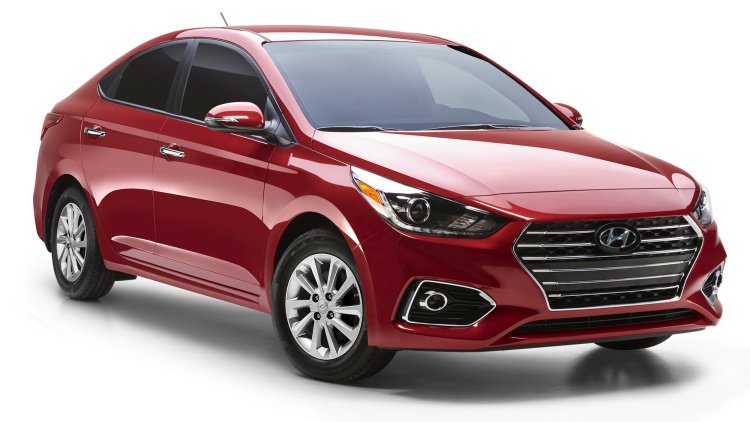2018 Hyundai Accent packs compact car style in a subcompact

The result is a subcompact sedan that's slightly wider and slightly longer, and looks very much like its larger Elantra sibling. The Elantra's hexagonal, slatted grille, headlight shape, and greenhouse have all been scaled down to the Accent's smaller body. Even the taillights echo the pattern of those on the Elantra. Fortunately, the proportions weren't thrown off in the shrinking process, so the Accent is a reasonably handsome, if slightly conservative, sedan.
The new Accent also sports a rather spiffy interior, at least with the red and black upholstery shown. That particular color combo wouldn't look out of place in an Elantra Sport. The dash itself isn't particularly remarkable, but it looks attractive enough and fairly straightforward. It also features a 7.0-inch touchscreen with which the occupants can use Apple CarPlay or Android Auto. The seats can also be had with heaters. Hyundai touts automatic emergency braking as an available safety option.
Mechanically, the big news comes in the form of chassis rigidity improvements. Hyundai says the new Accent is 32 percent stiffer, thanks in part to more high-strength steel. Under the hood is an updated 1.6-liter direct injection four-cylinder that makes 132 horsepower and 119 lb-ft of torque. This is a bit surprising, as the output is slightly less than that of the outgoing model. On the flip side, Hyundai claims this engine is 7 percent more fuel efficient, and that low-rpm torque has been improved. Plus, 132 horsepower is on par with competitors, and buyers who want to make the most of it have the option of a six-speed manual. A six-speed automatic is available, too.
Pricing hasn't been announced for the new Hyundai Accent, but the sedan will show up at dealers during the third quarter of this year. The hatchback version, which has yet to be shown, will arrive in the fourth quarter of 2017.
Nouvelles connexes


